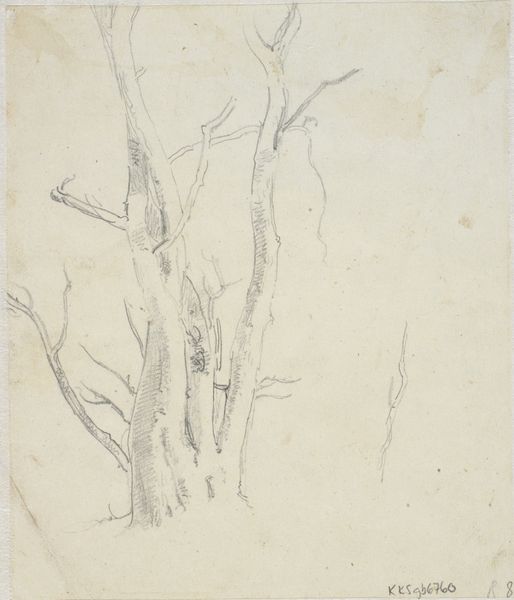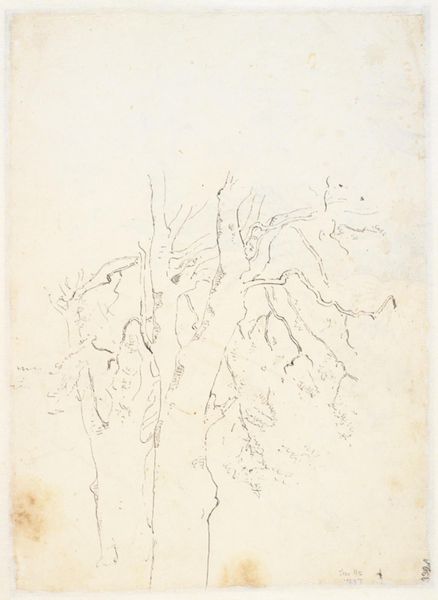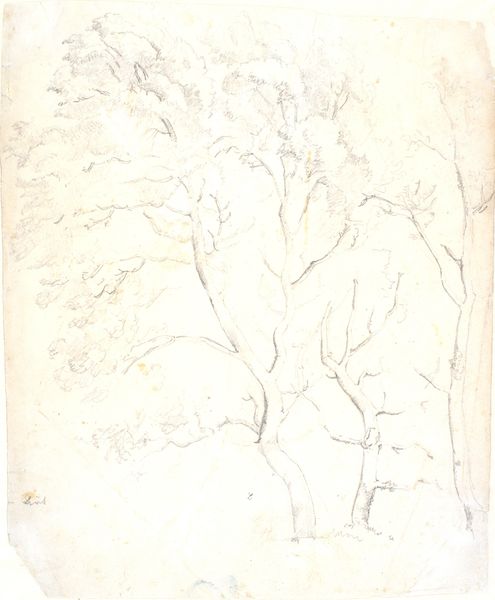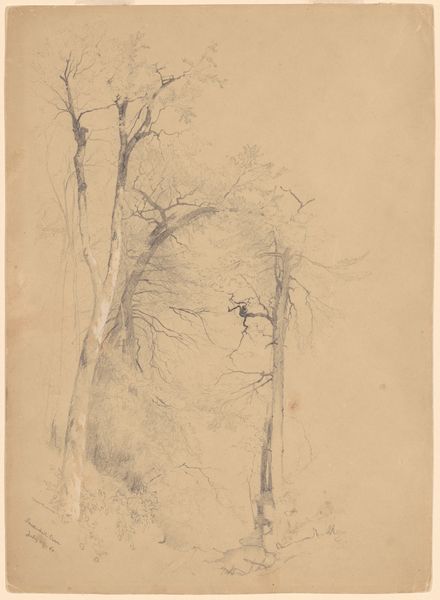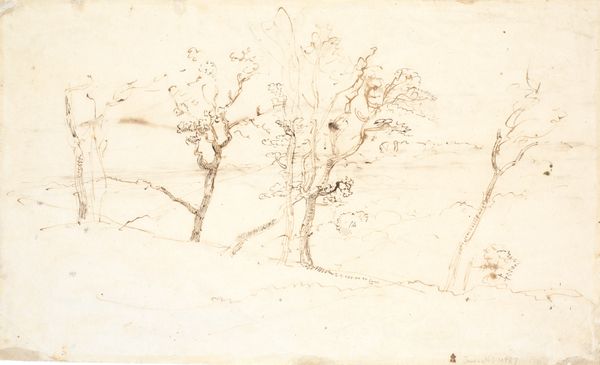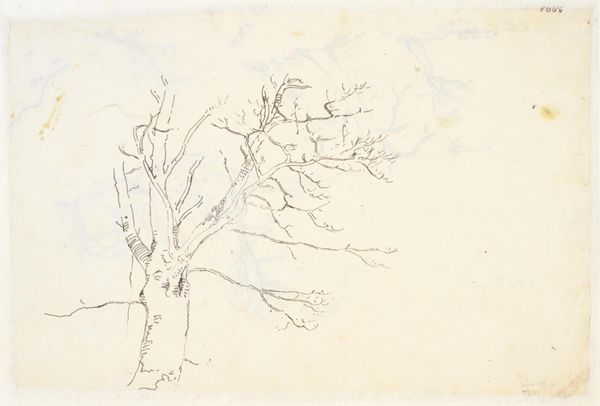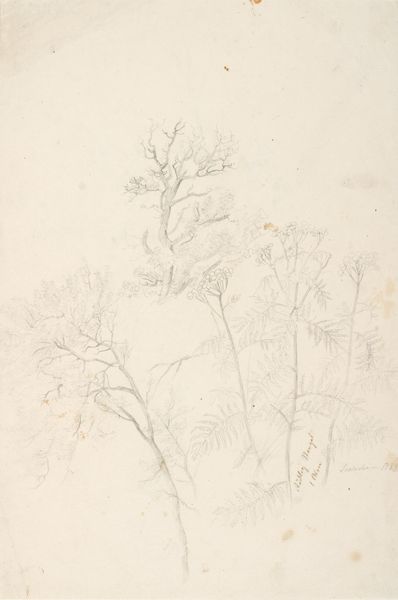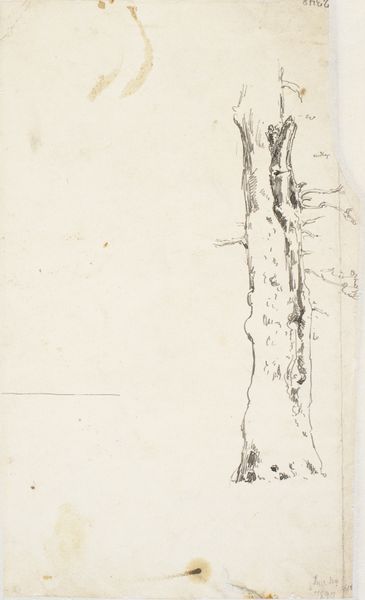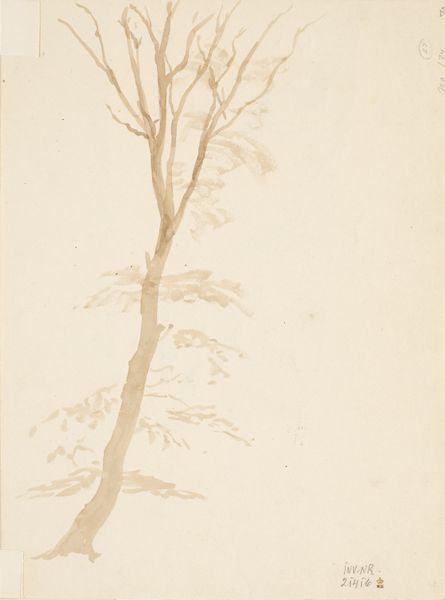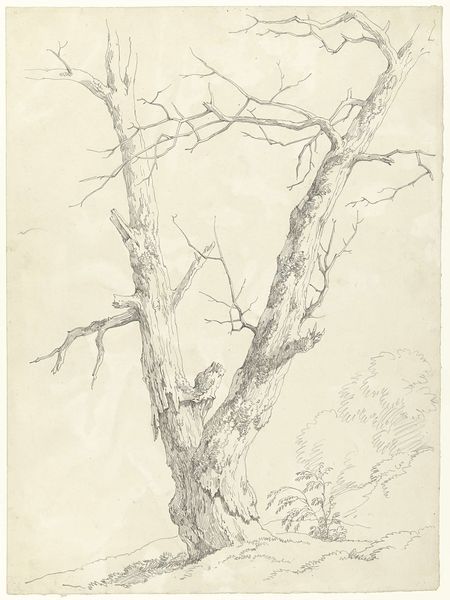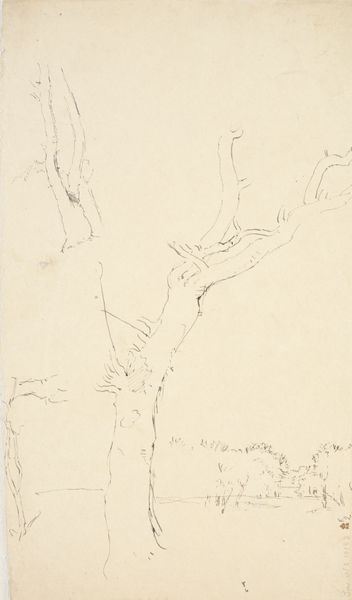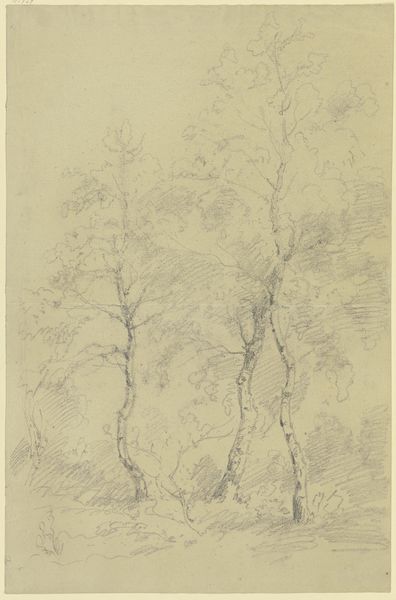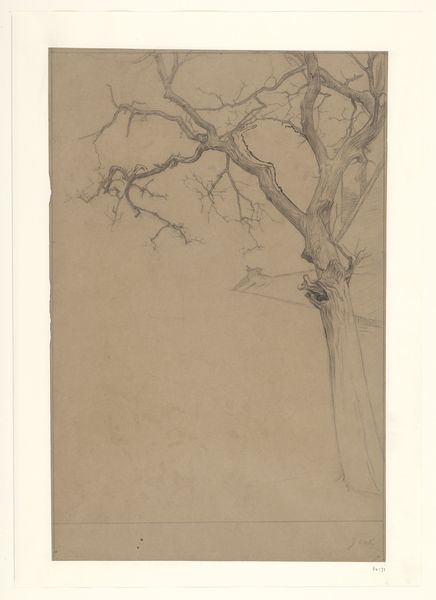
drawing, pencil
#
drawing
#
landscape
#
figuration
#
romanticism
#
pencil
#
line
Dimensions: 192 mm (height) x 164 mm (width) (bladmaal)
Curator: Upon first glance, there is something haunting about this image; it makes me feel vulnerable. The bare tree against a pale background… and a human figure lurking under its boughs! Editor: Yes, the sense of loneliness is quite profound. This drawing, titled "Træstudie," or "Tree Study," was rendered in pencil by Dankvart Dreyer sometime between 1831 and 1852. It resides now in the collection of the SMK, the Statens Museum for Kunst. Curator: It’s more than loneliness, though, I feel a connection. The tree looks barren, like an archetype, maybe a symbol of loss or the transience of life? Its simplicity seems to mirror the inner life. Editor: I wonder if that connects to Romanticism, a time when trees were central to establishing national identity. Perhaps Dreyer intended something more radical – trees are, after all, material and can be used or traded as commodities. Could this be an observation about society's use and abuse of nature? Curator: Maybe. There's a starkness that transcends simple Romantic pastoralism. The almost aggressive quality of the lines forming the tree and the posture of that single human figure gives me pause. Editor: What do you mean "aggressive?" I see Dreyer, as an artist in the 19th Century trying to forge a space for himself and also the medium, the pencil drawing, as something distinct and with purpose of its own in Danish art. It’s confident, not aggressive. Curator: Perhaps my language is too strong; but the lines that delineate the bark feel unforgiving and create tension rather than solace, which can still evoke romanticism and its relation to an identity being forged during that era. The person looks almost engulfed. Editor: Agreed. The figure definitely lacks scale, underscoring human insignificance perhaps. These elements taken together – the scale, stark rendering, and the era’s interest in natural resources – seem deeply intertwined, beyond simple genre or subject matter of landscape. Curator: Precisely, an interconnection of symbol and commentary in the way that Dreyer made a line that we feel viscerally. Art that offers us both the space to examine personal feelings, and historical or institutional perspective always resonates powerfully. Editor: A pertinent intersection to note. Dreyer challenges us not to settle for a facile reading of the relationship between culture and nature. A drawing from the past can be alive with contemporary meanings!
Comments
No comments
Be the first to comment and join the conversation on the ultimate creative platform.
